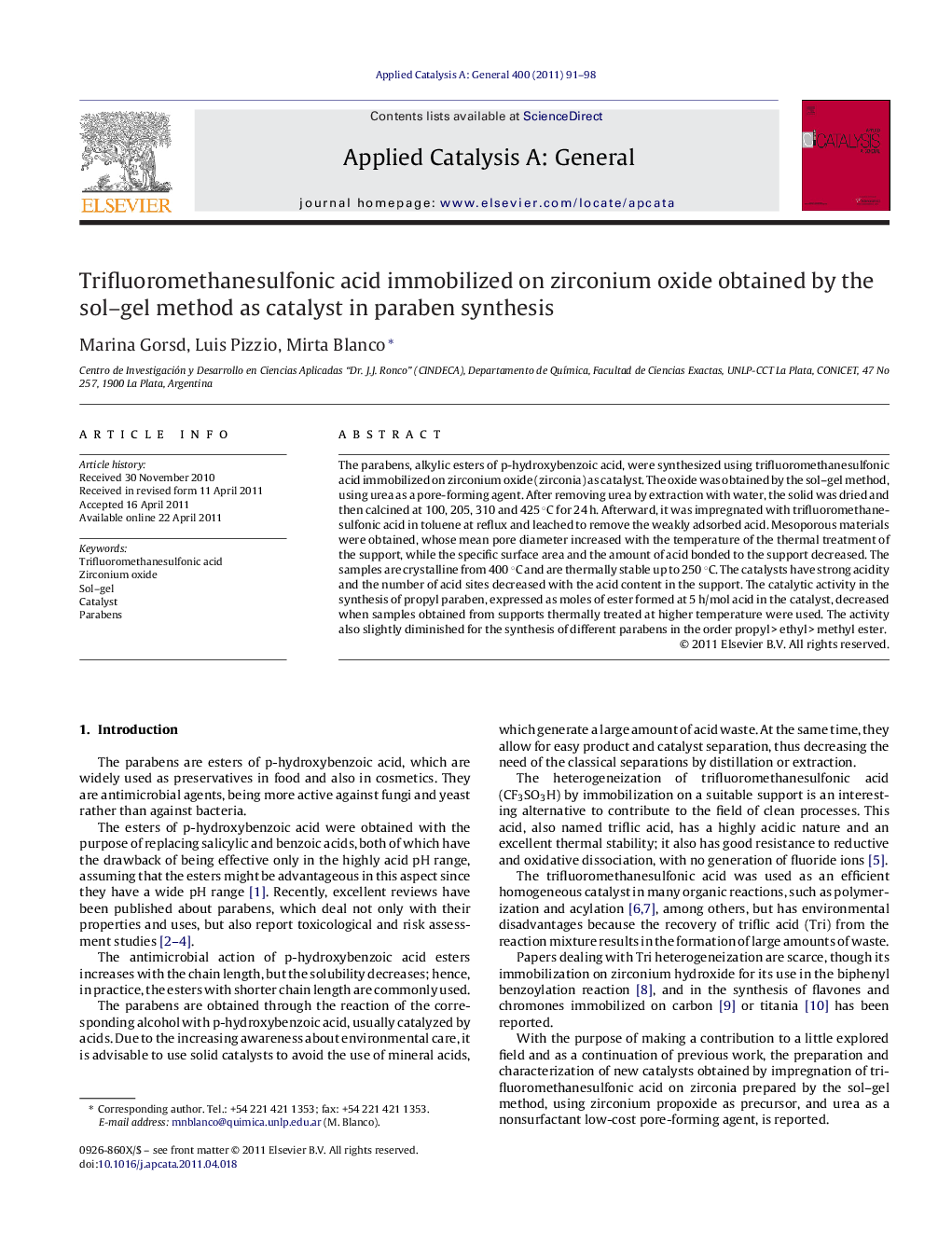| Article ID | Journal | Published Year | Pages | File Type |
|---|---|---|---|---|
| 41328 | Applied Catalysis A: General | 2011 | 8 Pages |
The parabens, alkylic esters of p-hydroxybenzoic acid, were synthesized using trifluoromethanesulfonic acid immobilized on zirconium oxide (zirconia) as catalyst. The oxide was obtained by the sol–gel method, using urea as a pore-forming agent. After removing urea by extraction with water, the solid was dried and then calcined at 100, 205, 310 and 425 °C for 24 h. Afterward, it was impregnated with trifluoromethanesulfonic acid in toluene at reflux and leached to remove the weakly adsorbed acid. Mesoporous materials were obtained, whose mean pore diameter increased with the temperature of the thermal treatment of the support, while the specific surface area and the amount of acid bonded to the support decreased. The samples are crystalline from 400 °C and are thermally stable up to 250 °C. The catalysts have strong acidity and the number of acid sites decreased with the acid content in the support. The catalytic activity in the synthesis of propyl paraben, expressed as moles of ester formed at 5 h/mol acid in the catalyst, decreased when samples obtained from supports thermally treated at higher temperature were used. The activity also slightly diminished for the synthesis of different parabens in the order propyl > ethyl > methyl ester.
Graphical abstractFigure optionsDownload full-size imageDownload high-quality image (113 K)Download as PowerPoint slideHighlights► Trifluoromethanesulfonic acid immobilized on zirconia, obtained by sol–gel and calcined at different temperatures, catalyzed paraben synthesis. ► The catalysts have strong acid sites, whose number decreased with acid content. ► Catalytic activity in propyl paraben synthesis decreased for supports calcined at higher temperature. ► Activity in paraben synthesis slightly diminished in the order propyl ethyl methyl ester.
